How to Remove a Tick and When Can Its Bite be Dangerous?
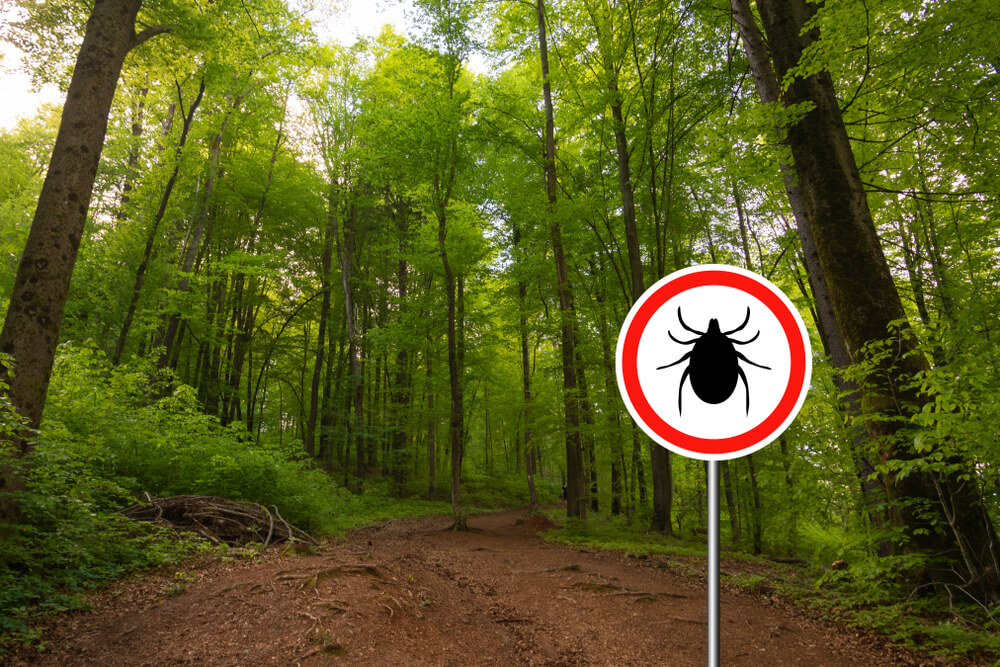
What does a tick look like and how to remove it? These are the two common questions to ask when you suspect a tick attack. There are different types of ticks with their unique features. While identifying a tick is crucial, it is more important to get rid of anything that looks like one. The first step to identifying what a tick looks like is to assume that any dark-colored eight-legged round insect on you could be a tick.
Contents:
What do Ticks Look Like?
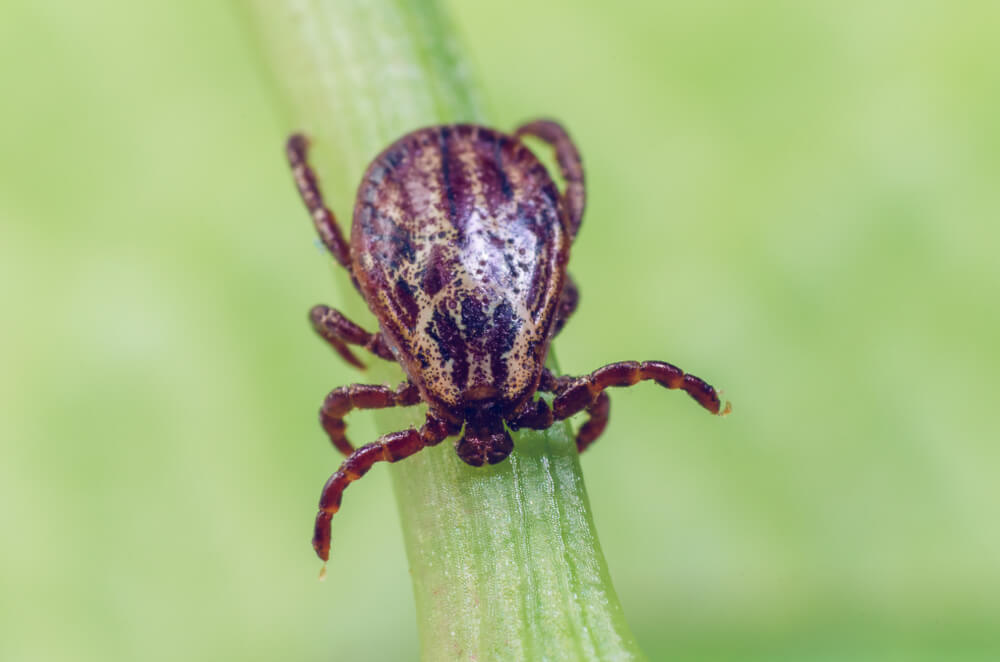
Afanasiev Andrii/Shutterstock.com
Remember that a tick bite can cause severe health conditions. Therefore, it is best to focus on how to remove a tick than trying to identify it initially. Once you have removed the tick below are the basic features of ticks.
Basic Features of a Tick
Around nine hundred different types of ticks are in existence today. Among this number, North America is currently home to around ninety species of this creature. There are two broad classes of ticks, the soft and the hard-back. What differentiates the hard-back tick from the soft one is the exoskeleton covering the body.

Many people can easily mistake a harmless insect for a tick. However, there are a few basic features that differentiate ticks from other insects. Taking a second glance can tell whether an insect is a tick or not. Some of the basic features you need to take note of about ticks are:
#1. Ticks are Not Insects, they are Arachnids
Ticks belong to the same class as scorpions and spiders. Therefore, understanding some of the physical features of arachnids can help you identify a fully-developed tick. One of the basic features of a tick is that they have four pairs of legs. Notwithstanding, nymph and larva stage ticks may have three pairs of legs. In the final stage of maturity before the adult stage, ticks develop the last pair of legs.
They also have their cephalothorax fixed together, which provides the tick’s round shape. When ticks are full of blood, they appear very large in shape.
#2. Ticks Have A Four-Stage Life Cycle

BlueRingMedia/Shutterstock.com
The life cycle of a tick has four stages:
- the egg;
- the Larva;
- nymph;
- full adult stage.
Besides the egg stage, ticks feed on blood throughout the other stages of their life. They are parasitic and stick to their host for 24 to 48 hours. There is a greater chance of nymph and adult tick encounters. Therefore, ensure to treat any suspicion of the tick as though it is a tick.
Before attempting to identify a tick, it is essential to remove the tick first. If possible, ensure that you seal it properly in a secure container. Since some ticks can lead to illnesses, you should consider visiting a doctor after tick removal.
#3. Adult Ticks Do Not Have an Antenna
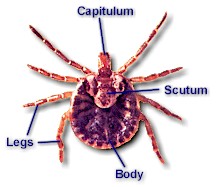
Unlike insects, adult ticks do not have antennae. It is one way to identify one when you see it. You can also identify a tick by its scutum. The scutum is a patch directly under the head that is in form of a shield. The scutum is present in both hard and soft ticks.
Tick Diseases
Different types of ticks are host to different types of diseases. It is, therefore, essential to understand the different types of ticks affecting humans. Some of the common tick species that have human beings as their host are:
- the deer/ black-legged ticks;
- the Lonestar ticks;
- Rocky Mountain wood ticks.
The Deer Tick
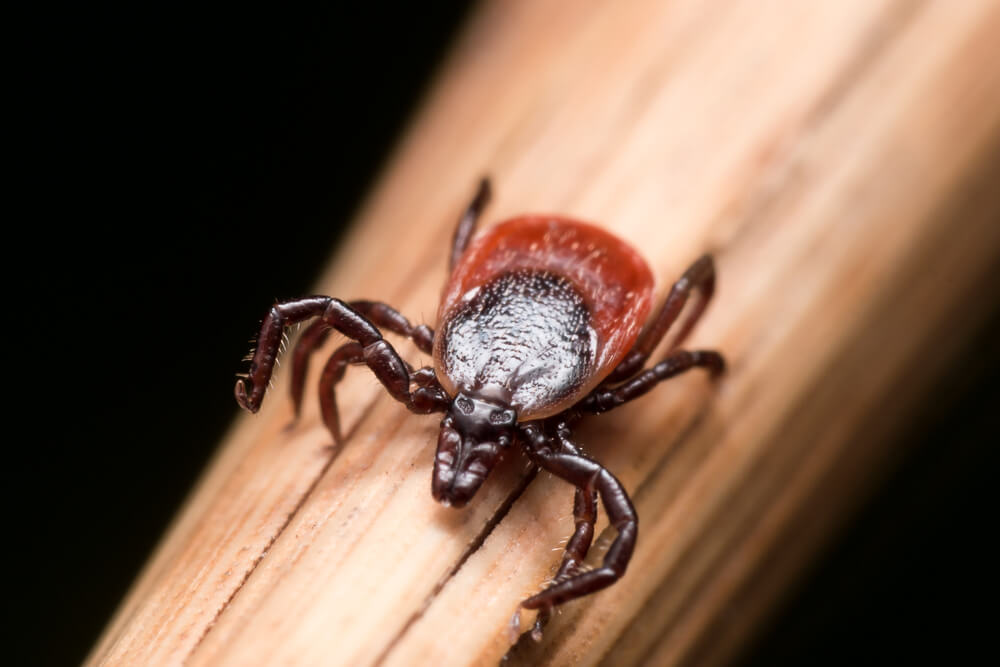
Steven Ellingson/Shutterstock.com
The deer/black-legged ticks are significant for their black legs. The deer ticks often prefer to host the white-tailed deer. However, they also host humans. They are common across the United States, from mid-Atlantic to northeastern, northcentral, and southeastern United States. Blacklegged ticks cause illnesses like:
- anaplasmosis;
- Hamman babesiosis;
- powassan encephalitis etc.;
- the Lyme disease.
The black-legged ticks are oval ad flat in shape. They have dark legs, and their color is orange-brown. They are 1/8” in length with eight legs. They hide in grass and shrubs and wait for unsuspecting victims. Also, they live in the nests and habitats of their host.
The Lonestar Tick

Jay Ondreicka/Shutterstock.com
Lonestar ticks are the most common ticks that host human beings. You can identify them by the single spot on the back of the females. They are common in the eastern and southeastern parts of the United States.
Lonestar ticks are reddish-brown in color and grey when they engage with their host. Like the black-legged ticks, they are 1/8” in length but can become as large as 7/16” when puffed-up. The males are somewhat smaller than the females.
At different stages of life, the lone star tick requires a separate host. Their mode of infestation is by climbing up the tips of grasses and vegetables and waiting for their host. Nymph and adult Lonestar ticks also crawl on the ground to find their host.
Lone star ticks are vectors of diseases like:
- bourbon virus;
- heartland virus;
- southern tick-associated rash illness (STRI);
- tularemia.
Detecting and removing this tick on time is crucial to preventing illnesses. They are a little harder to pull out due to their long mouthparts. They can easily break off during removal and cause more sickness to the host.
Rocky Mountain Wood Ticks
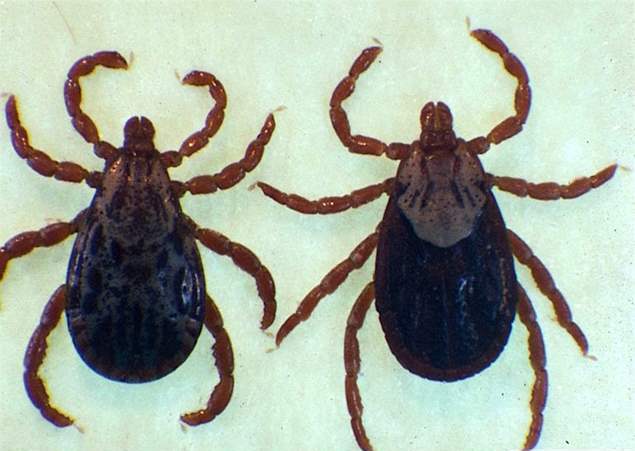
The rocky mountain wood tick resides in the Rocky Mountain state. They are oval and flat in shape and measure from 1/8” to 5/8” in length. They are usually brown but become grey when puffed up with blood. At the larva stage, the rocky mountain tick has six legs. Adults have eight.
Like the Lonestar tick, the rocky mountain tick is also a tri-host tick. Each stage of their life requires a new host. They are most common from the middle of March to July. While the larvae stage feeds on smaller animals like rodents, adult wood ticks feed on deer, sheep, and humans.
One of the risks of the wood tick is the Rocky Mountain Spotted Fever (RMSF). Poor treatment of RMSF can have fatal consequences. RMSF comes with a full-body rash that appears 2-5 days after the tick bite.
What Do Tick Bites Look Like?

Evgeniyqw/Shutterstock.com
It is often difficult to differentiate a tick bite from other insect bites. A tick bite on humans may appear as a tiny puncture mark and skin redness. It can also lead to small, brittle, dry skin around the bite area. If the tick bite is harmless (does not cause the transmission of harmful organisms), scabbing is minimal and goes away after a few days. The scabbing is more pronounced if a large tick bites you.
Some of the typical features of a tick bite include:
- redness of the skin;
- small puncture mark;
- mild swelling.
The signs are similar to those from other insect bites like mosquitoes, fleas, and bed bugs. However, tick-borne diseases like Lyme disease, make the mark more distinguishable from other insect bites. Not all tick bites transmit diseases, only pathogen-carrying ticks can do so. Even pathogen-carrying ticks need to attach from 24 to 48 hours to be able to transmit Lyme-causing bacteria.
Tick Bite Symptoms
Some of the common symptoms of a tick bite include:
- chills;
- fever;
- headaches;
- muscle pain;
- itchiness or irritation (not always instantly);
- skin irritation.
Normal Tick Bite Vs Lyme Disease
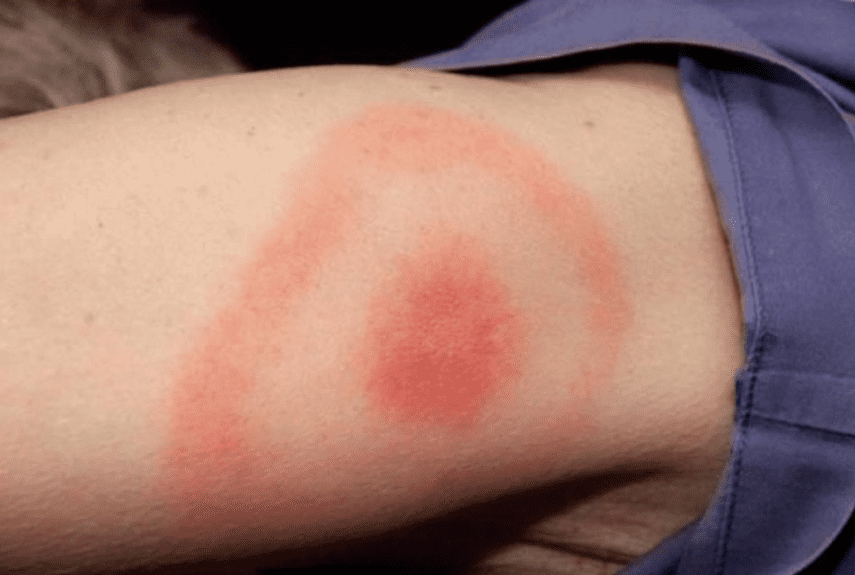
Lyme Disease: bbc.com
There is a significant difference between a normal tick bite and a Lyme disease. Lyme disease (Bullseye Rash) has a distinct red circle that is significant around the tick bite area. The size ranges from 5 to 70 cm. In most cases, there is a noticeable lightening of the circle as it expands leaving a red dot in the center and a thing dark red circle on the outer part of the ring. The result resembles a target with the bite as the bullseye.
The way the pattern appears depends on the individual. The mark is significant for 70 to 80% of people who contract Lyme disease.
When to Go to The Hospital?
You should consider visiting the hospital if you notice any of these signs:
- If you discover the development of rashes around the bite area.
- If you are feeling pain or see a blister around the bite area.
- If you begin to experience flu-like symptoms days after a tick bite.
How to Remove A Tick?
A pointy tweezer is a very effective tool in removing a tick. You also need rubbing alcohol to sterilize your tool and the area around the bite. It is different from your regular home care tweezers. Some ticks can be small, and your flat tweezers will tear the ticks apart.
According to dermatologists, use the following steps to remove a tick:
Step One:
Sterilize your tweezers with rubbing alcohol. Use the tweezer to grab the tick just above the skin.
Step Two:
Once you grab the tick, pull upward with even pressure. Ensure a steady pull, and avoid twisting and squeezing. You do not want to crush the tick or break the mouth inside the skin. If the mouth breaks off inside the skin, use tweezers to remove the remaining portion. If this is not possible, visit a certified dermatologist.
Step Three:
Get rid of the tick by placing it in a secure jar or immerse it in alcohol. If you develop any signs after the bite, the tick will be handy for disease detection.
Step Four:
Use soap and water to wash the biting surface.
What to Do After a Tick Bite?
Some of the things to do after a tick bite include:
- See a doctor in case you develop any signs or notice the presence of rashes after a bite.
- Identify the type of tick and the possible time of the bite.
- Try to identify where you acquired the tick and consider preventive measures.
- Check to see if there are others and consider treating the area.
Alternative Methods of Removing a Tick
While the use of a pair of fine-tipped tweezers remains the best approach to tick removal, there are other unorthodox ways of removing ticks. You can try them at your own risk since they do not have any medical backing.
- Freezing out the tick.
- Burning the tick with a match or a cigarette light.
- Applying alcohol to the affected area.
- Covering the tick with petroleum jelly.
- Painting the tick with nail polish.
FAQ

MakroBetz/Shutterstock.com
Q. Do Tick Bites Itch?
Yes. Tick bites can lead to itching and redness of the skin. Sometimes, there is also dryness of the skin around the bite area. However, many people do not experience itching after a tick bite.
Q. How to Tell If the Tick Head is Still in the Skin?
Sometimes, you can physically see the remaining part of the stuck head through close examination. Other times, it is difficult to identify if there is a remaining mouth part in your skin. Consider visiting a dermatologist if you notice a black dot on top of the bite area or a lump on the bite area.
Q. What are the Symptoms of Tick Head Stuck in the Skin?

Источник: syko.ru
The symptoms include a hard bump on the bite area. You may also feel soreness in the area or red-black hue development on the bite area.
Q. What to Do When a Tick Head is Left in the Skin?
Don’t apply self-medication. See a certified dermatologist to help you remove the stuck head completely.
Q. How Long Does a Tick Need to Stick On to Transmit Infection?
A tick needs to attach for 24 to 32 hours to transmit disease and infection.
Prevention is always the best when it comes to ticks. If you are the type that loves to hike, ensure to use protective gear. Also, ensure that your pets are neat and do not bring in ticks to the home. Many ticks that affect animals also attack human beings. In case of a tick bite, do not panic. It is not every tick bite that will eventually lead to illness.
However, if you develop symptoms after the bite, endeavor to visit your doctor. Have you ever had any experience with ticks? Share with us in the comment section. If this content was helpful to you, consider sharing it with others.
The picture on the front page: 24K-Production/Shutterstock.com
Проверьте электронный ящик



















